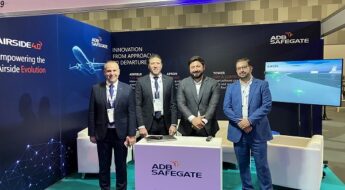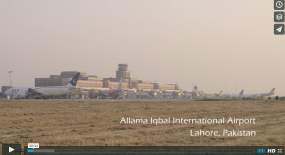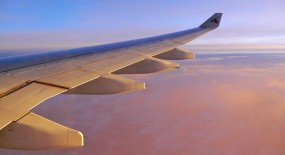
Did you know that more than 300 airports globally are actively addressing their carbon emissions within the Airport Carbon Accreditation programme? The Airport Carbon Accreditation Interim Report 2019-2020, published by ACI in February, highlights continued airport industry climate action amid the COVID-19 pandemic. But, uncertainty is mounting.
SUSTAINABILITY. The airport industry’s commitment to addressing carbon and climate issues remains an absolute priority, even as the impact of COVID-19 causes unprecedented disruption in the global aviation sector. Since the start of the COVID-19 outbreak, 31 airports have progressed to a higher level of the Airport Carbon Accreditation programme and 34 airports have become accredited for the first time.
Driven by a long-lasting leadership of airports in CO2 management and reduction, the airport industry’s readiness to decarbonize is a trend set to remain in 2021 across all world regions. But, the necessary investments to further cut carbon in the sector should, however, be considered as one of the grounds for urgent government aid as the financial situation of airports across the world deteriorates rapidly.
Olivier Jankovec, Director General of ACI EUROPE:
As the industry hardest hit by COVID-19, that will take the longest to recover and is the hardest to decarbonize, aviation should be a prime beneficiary of State support to continue work in this regard. The new Airport Carbon Accreditation Interim Report has delivered another case in point for airports’ proven track record on the path to decarbonization. Even as resources dried up airports kept engaging. However, with the prospect of recovery almost as remote as at the beginning of the crisis, such commitment and engagement cannot be taken for granted. We all know we cannot wait for the health crisis to dissipate to address the accelerating climate emergency.
 Airport Carbon Accreditation is the global standard for carbon management in the airport industry. The programme was launched in Europe in 2009 and since 2014 it covers all ACI regions. As part of the global efforts in climate mitigation, Airport Carbon Accreditation supports the airport community in reducing its carbon footprint, demonstrating its achievements and sharing knowledge and best practices. On February 5, ACI published the Airport Carbon Accreditation Interim Report 2019-2020, showcasing the latest results of and developments in the global carbon standard for airports. This report provides information regarding key achievements and developments, the most significant global and regional trends, and case studies highlighting the airports’ commitment to continued climate action in spite of the current crisis.
Airport Carbon Accreditation is the global standard for carbon management in the airport industry. The programme was launched in Europe in 2009 and since 2014 it covers all ACI regions. As part of the global efforts in climate mitigation, Airport Carbon Accreditation supports the airport community in reducing its carbon footprint, demonstrating its achievements and sharing knowledge and best practices. On February 5, ACI published the Airport Carbon Accreditation Interim Report 2019-2020, showcasing the latest results of and developments in the global carbon standard for airports. This report provides information regarding key achievements and developments, the most significant global and regional trends, and case studies highlighting the airports’ commitment to continued climate action in spite of the current crisis.
View the Airport Carbon Accreditation Interim Report here >>
At ADB SAFEGATE we know that sustainable practices and technology advances are the two main ingredients in an upwards spiral to maintain the positive trend towards sustainable growth. Below are some examples of technology improvements gaining footholds around the world, and having a great impact when it comes to reducing the aviation environmental footprint. They represent some of the recent inventions that not only reduce CO2 and NOx, but also reduce ground noise due to reduction of time when aircraft engines and gate/apron equipment are used:
- New airfield lighting technologies including light emitting diode (LED) and control and monitoring technology that provide up to 90% energy savings – equating to annual savings of up to 5000 tonnes of CO2 for a medium-sized airport. Read more about low-current-airfield-lighting-systems.
- Gate technologies supporting airport collaborative decision making which large airports report annual reductions of up to 17000 tonnes of CO2. Read more about gate integration.
- Airport routing and guidance systems providing more efficient aircraft taxi-in and taxi-out guidance with reduction of up to 40% in taxi times. In turn, this has the capability to reduce fuel burn and CO2 emissions in the range of tens of thousands tonnes annually.
Several new inventions are undergoing testing and are on their way to reduce the airport environmental footprint even further. But there is always more to do. Even small efficiency improvements and savings offer significant benefits overall.
If you want to discuss greener operations, don´t hesitate to contact our your local ADB SAFEGATE office. A more efficient airport is most often also a more sustainable airport.
ADB SAFEGATE provides integrated solutions that raise efficiency, improve safety, boost environmental sustainability and reduce operational costs for airports, airlines and ANSPs. The company works with airports and airlines to solve operational bottlenecks from approach to departure. Solutions encompass airfield lighting, tower-based traffic control systems, intelligent docking automation and services, as well as applying advanced IT and analytics to deliver industry-leading Total Airport Management. For more information about ADB SAFEGATE, please visit our website at adbsafegate.com.















Leave a Comment